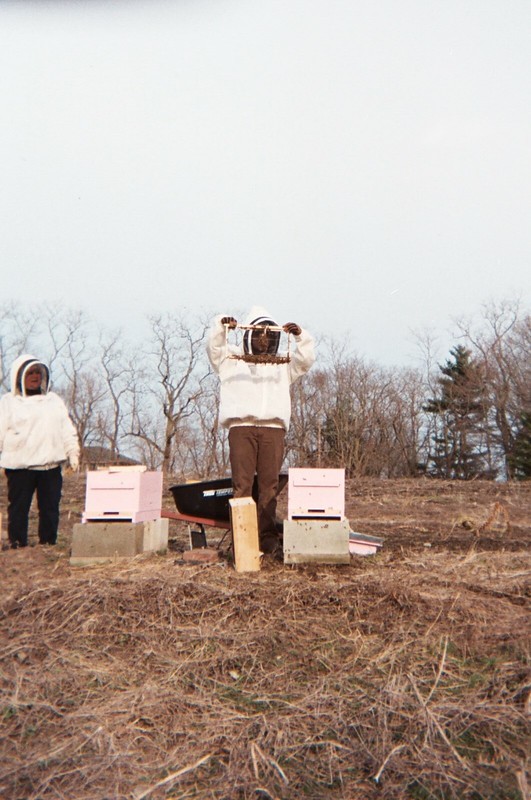
Happy Spring everyone! We’re pleased to announce the addition of two new beehives on the farm! The bees arrived and were installed this Easter [Beester], and have since settled in nicely on the farm. It’s such a pleasure to see our coworkers busily collecting pollen and nectar in the chickweed and pear tree blossoms!
Our bees have a few important features [beetures?] that make them very special, at least to us! First of all, we have northern queens. This means our queens are bred from bees that have successfully maintained a healthy hive through a cold New-England winter. They also come from stock known for having good bee-instincts, like hygiene and propolizing. Our bees are also raised on foundationless frames, meaning they build their own comb, rather than drawing wax on a foundation we give them.
We’re experimenting with naturally drawn comb in hopes that it will lead to a more robust colony. Some people believe that small-cell bees are more resistant to Varroa mites, although this has not been proven empirically. The thought is that bees raised on larger cells [as are found in standard foundation] take an extra day to emerge from their brood cells, where the mites reproduce [both of these statements are definitely true]. This gives the mites an extra day to lay their eggs, thereby increasing the varroa population. So reverting to natural cells may give the mites less time to reproduce, helping the bees control the varroa population. This has only been seen anecdotally, but I personally think that when you’re dealing with such a complex system as a bee colony, it’s better to futz with it as little as possible. So natural it is! Going foundationless also means we’re not exposing the bees to pesticide and chemical build up, found in wax foundations. For more about converting a standard hive to foundationless, check out The Honey Bee Suite, which has lots of good pictures and information.
Going foundationless can be a little tricky, though! The first time I opened up the hives , I discovered one of them much preferred the roof to the frames I had so thoughtfully provided, and had begun to build their comb off of it! I had to perform some minor hive-surgery, cutting the comb off of the roof and tying it into a frame. They were not super happy about it! But they’ve since forgiven me, and returned to their springtime work, building comb and collecting pollen and nectar. Soon enough I will check in on them again, to see if they need some more space to expand into.
